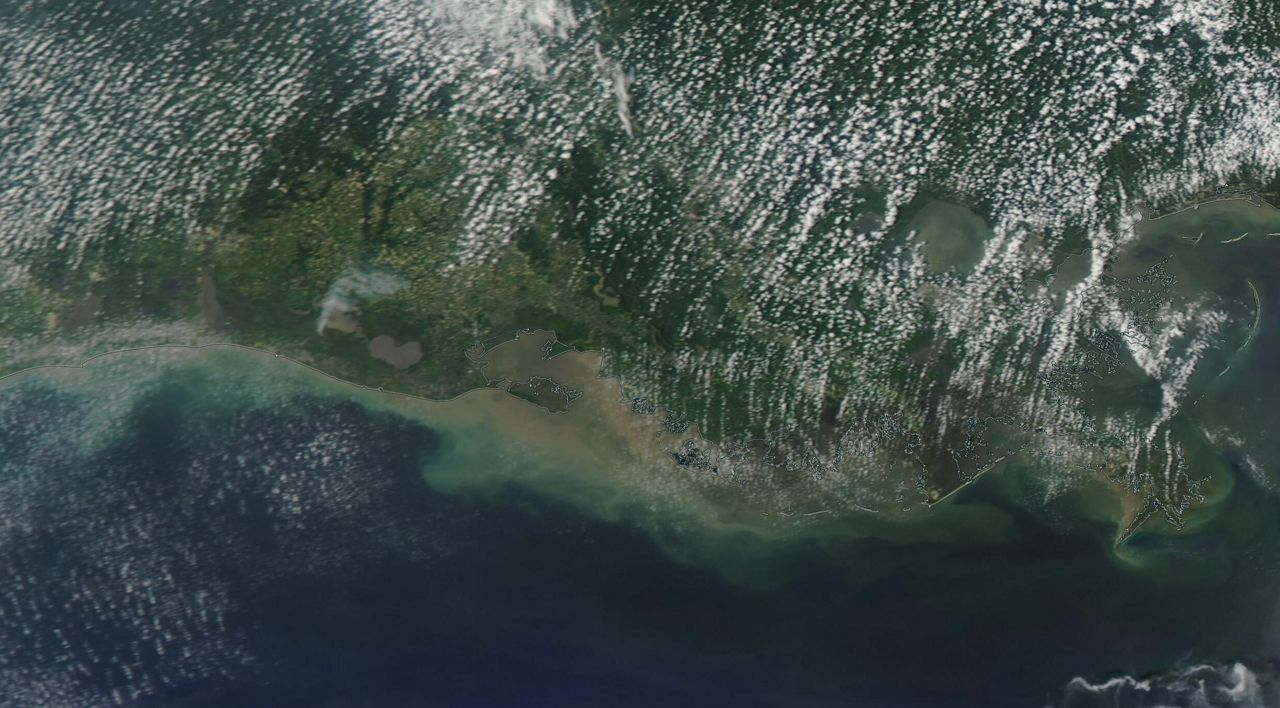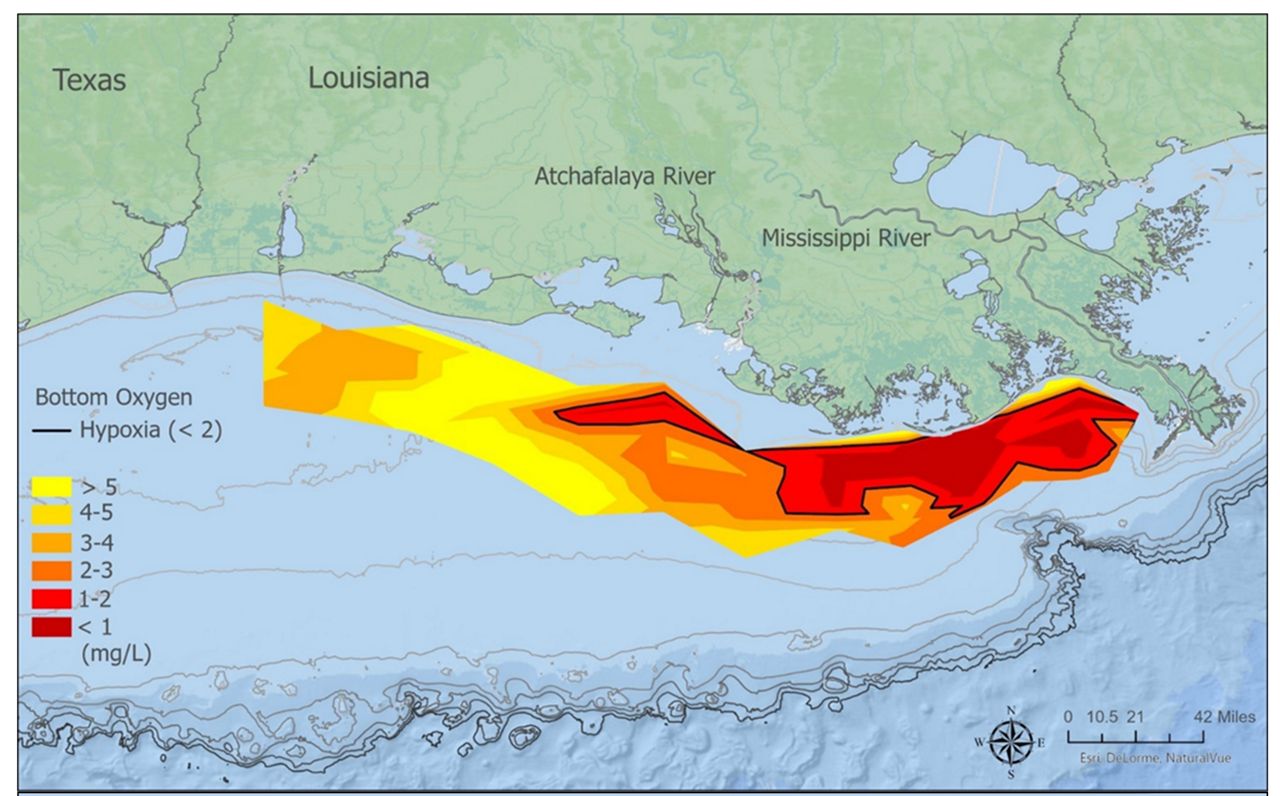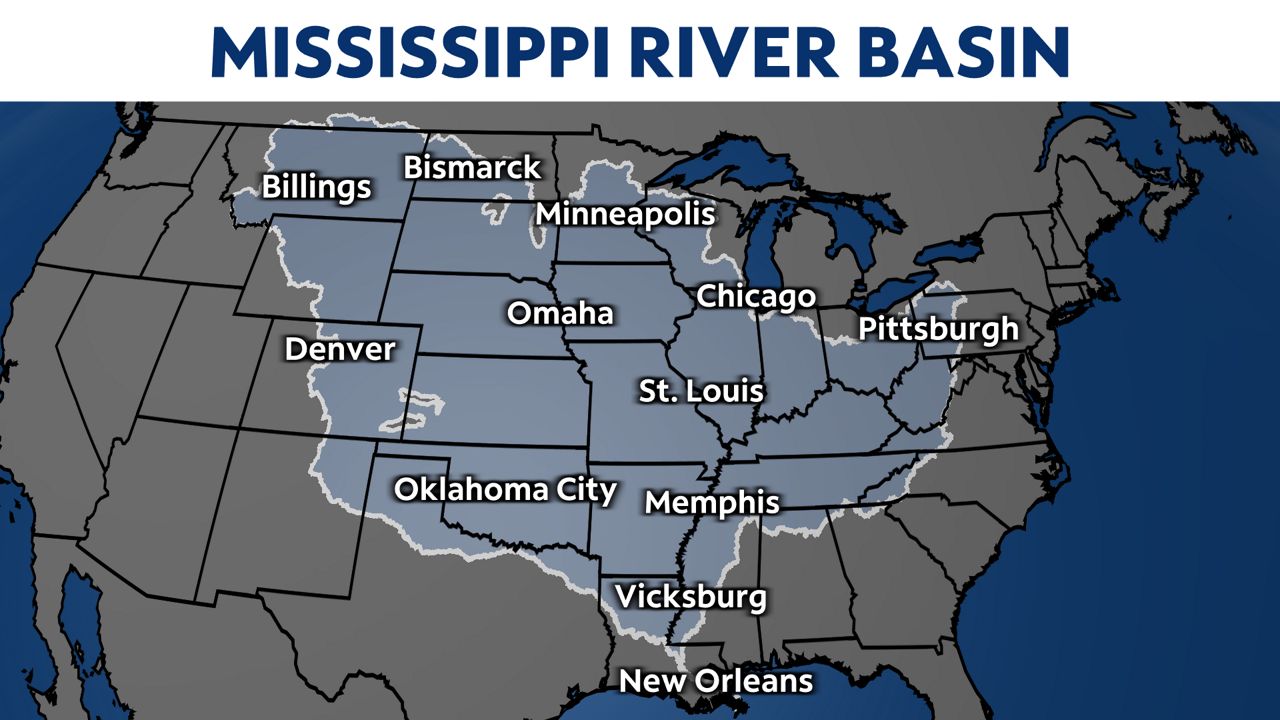Every year, water pollution from throughout the Mississippi River basin finds its way into the Gulf of Mexico, creating a “dead zone” in the summer. This year’s was the seventh smallest since records began in 1985.
What is a “dead zone” and why does it matter?
The Gulf of Mexico “dead zone” is an area of very low oxygen levels in the water. It typically is near the Louisiana coast, sometimes stretching farther in either direction.
The main culprit is excess nutrients–nitrogen and phosphorus from agriculture and cities–spilling into the Gulf.
It kicks algae growth into overdrive. Those algae eventually die and decompose, removing oxygen from the lower parts of the water when they sink.
Some shrimp and fish can leave, but other animals can’t. Regardless, low oxygen levels can kill fish and other marine life. This also affects industry, like commercial shrimp harvesting.

High-resolution satellite image showing sediment near the Louisiana coast on June 16, 2023. (MODIS)
This year’s dead zone
NOAA reports that this year’s research ship found the dead zone was about 3,060 square miles, a little smaller than the size of Yellowstone National Park.

The Gulf’s dead zone is in red, circled by a black line. (NOAA)
This was below their June forecast of 4,155 square miles and below the new five-year average of 4,347 square miles. The record of 8,776 square miles–about the size of New Jersey–was set in 2017.
The main reason for this year’s smaller size, according to Louisiana State University’s Dr. Nancy Rabalais, was the drought conditions in a good share of the Mississippi River basin. Less rain meant less nutrient runoff into the rivers.
Future goals
The goal is for the five-year average size of the dead zone to be just 1,900 square miles by 2035. That means the nitrogen and phosphorus loads will have to come down by 48%, according to the United States Geological Survey’s Lori Sprague.
The Bipartisan Infrastructure Law provided the Environmental Protection Agency with $60 million to work toward that goal. Mike Naig, Iowa Secretary of Agriculture, says each state has its own strategies: creating new wetlands, incentivizing cover crops, reducing pollution issues at the source and so on.
Our team of meteorologists dives deep into the science of weather and breaks down timely weather data and information. To view more weather and climate stories, check out our weather blogs section.

